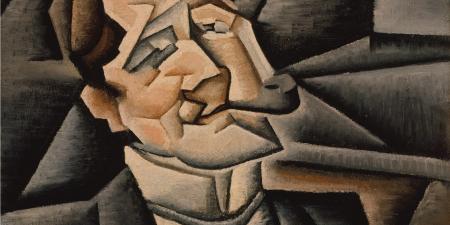As American health care services have become increasingly expensive, the persistent question of how to manage the financial aspects of caring for the poor has become more urgent. In 1847, when the American Medical Association published its Code of Medical Ethics, physicians were encouraged, as a duty to the public, to provide limited, gratuitous services to the poor:
Poverty, professional brotherhood, and certain of the public duties referred to in the first section of this article, should always be recognized as presenting valid claims for gratuitous services . . . to indigent circumstances, such professional services should always be freely accorded 1.
This duty of providing charity care had been a hallmark of the virtuous physician since the early Middle Ages, and over time had been incorporated into the gentlemanly ethic of the noblesse oblige. However, even by the time that the AMA Code formalized this duty in the mid-nineteenth century, several social factors were beginning to coalesce which would transform health care simultaneously into a commodity to be bought and sold on the market as well as a public good—and even a right—expected by citizens from their government. In the 150 years that followed, physicians would be called upon to mediate this tension between health as an expensive commodity and health as a social good. The question of how to care for the poor landed squarely in the center of this conflict which would come to define the context of medical practice into the year 2001.
The American medical profession emerged in the wake of the euphoria and aspirations of the Revolution. Political autonomy was in its infancy in the newly liberated colonies, and American wariness of the centralized authorities of European nations discouraged the involvement of Congress and state legislatures in the regulation of the medical profession. Instead, Americans developed a highly individualistic approach to medicine, modeled on the political philosophy of Adam Smith that promoted a specific, highly individual form of competition, with outcomes being decided by a free-market economy. Success in the American medical marketplace therefore came to depend upon the market forces of a consumer-based public.
Between the end of the Civil War in 1865 and the outbreak of World War I in 1914, improved hygienic measures and technological investments transformed the nature, effectiveness, and cost of medical treatment. American hospitals became permanent fixtures, both in the delivery of health care to the public and in the academic and clinical training of physicians. But unlike the hospital systems of Europe, which were largely created by religious orders or governments, the American hospital system, influenced more by a British philosophical bent and a disdain for government, developed in a distinct fashion. American physicians, eager to establish hospitals for educational and social purposes but wary of state controls, solicited funds from private donors who in turn became trustees and members of the board. The treatment of patients was then supported with fees charged to patients for individual services.
By the 1920s, American health care was based primarily in a fee-for-service, free-market system that was buttressed by educational standards and licensure requirements but otherwise few government controls. Ironically, England—whose system had provided the philosophical blueprint for the American approach to medical care—adopted a national health insurance plan in 1911 and, stimulated by the prospect of invasion during World War II, the English concluded that even more state involvement in the health care system was justified, both as a means to ensure care for the needy and to protect and promote public health.
As the 20th century progressed, "scientific medicine" led to extremely rapid advances in clinical care. In particular, after the First World War American medicine gained considerable prestige for its hospital-based medicine and the 1920s witnessed a rapid growth and expansion of hospitals throughout the United States.
In the decades that followed, American hospitals required heavy capital investments for technological developments. Patient fees, which had initially been a primary source of support, were no longer enough to sustain the rapid expansion of hospitals and the technologies they used. As medical care became more effective and expensive, the sense that access to health care was a social obligation requiring a pooling of risks began to take hold. As in Europe, early governmental involvement in providing care revolved around protecting national interests, such as the health of the Merchant Marine and the Armed Forces, and only later addressed care for the elderly, infirm, and poor. Protecting the health of the public was a major goal and, at least for some employers, maintaining a healthy workforce was also important. As effective therapies were developed that individuals could rarely afford to purchase, group hospital insurance plans were developed and the concept of the third-party payer was introduced to fill the void of governmental action.
As these changes took hold and began to shape the demands on the delivery of health care, the AMA's Code of Medical Ethics was re-written in the early 1920s and again in the 1940s to reflect the roles and obligations of physicians practicing within these institutional structures. Note how the duty of charity care is shifted to a section in the Code that discusses compensation. It reflects the growing insistence that institutions, rather than individual physicians, shoulder some of the burden of caring for the poor:
The poverty of a patient and the mutual obligation of physicians should command the gratuitous services of a physician. But endowed institutions and organizations for mutual benefit, or for accident, sickness and life insurance, or for analogous purposes, have no claim upon physicians for unremunerated services2;
In the ensuing decades of the 20th century, the rising costs of care and the increasing effectiveness of health care have slowly led the relationships of US physicians to be mediated by a host of private, public, and professional bodies-insurance agencies, health care institutions, government bureaus, professional associations, and so forth.
Physicians who have always had civic obligations to the public are now challenged to manage—both organizationally and professionally—the tension of health care as a commodity and health care as a basic social good in the face of patient needs, limited resources, and limited state support. From this tension have come the current Code guidelines on care for the poor3.
References
-
American Medical Association. Duties of the profession to the public. Code of Medical Ethics. Chicago: AMA Press; 1897.
-
American Medical Association. The duties of physicians to each other and to the profession at large, Compensation. Code of Medical Ethics. Chicago: AMA Press; 1947.
-
This article is based on an series by Geraghty KE, Wynia M. Advocacy and Community: The Social Roles of Physicians in the Last 1000 Years, November 13, 2000, which can be viewed on Medscape.



